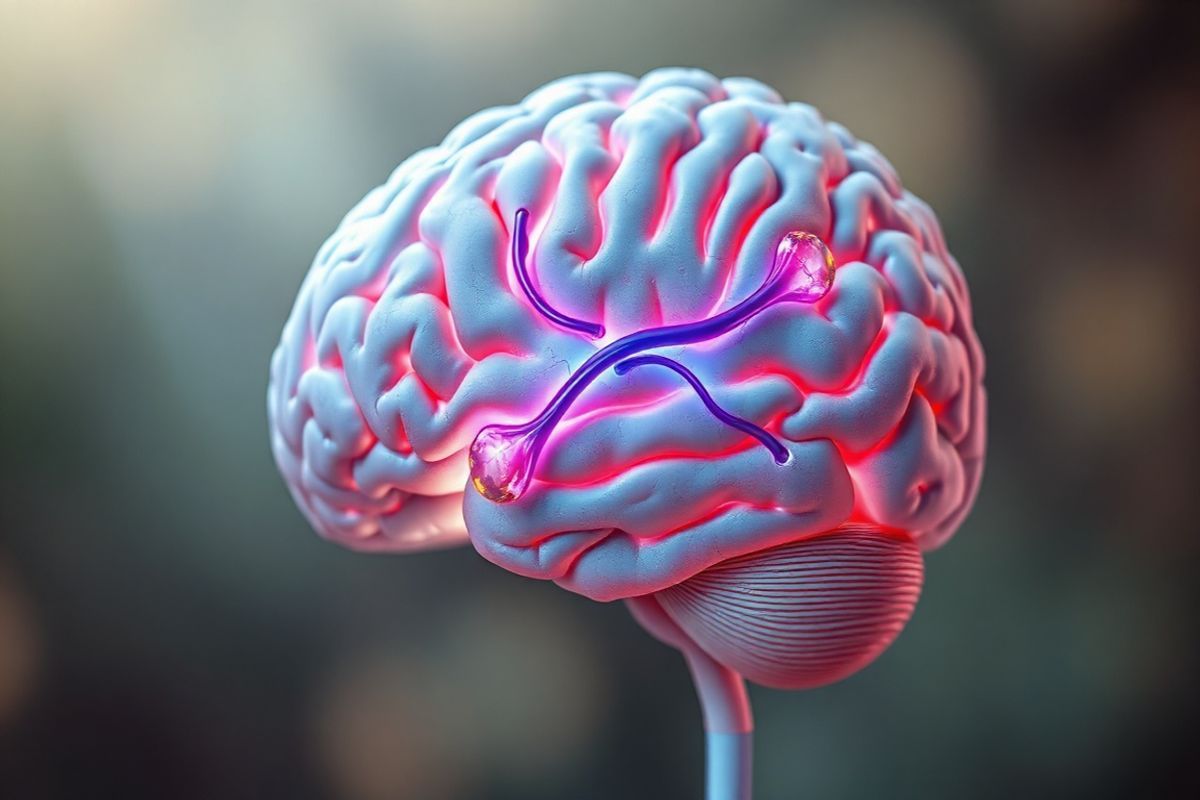Table of Contents
Understanding Cerebral Venous Sinus thrombosis: An Overview

Cerebral venous sinus thrombosis (CVST) is a rare but serious condition that occurs when a blood clot forms in the brain’s venous sinuses, preventing blood from draining properly from the brain. This condition can lead to increased intracranial pressure, swelling, and potentially severe complications such as hemorrhage or stroke (Cleveland Clinic, n.d.). CVST accounts for approximately 1% of all strokes, and its prevalence is estimated to be between 2 and 15 cases per million people annually (Cleveland Clinic, n.d.).
Risk factors for CVST include pregnancy, the postpartum period, use of hormonal contraceptives, obesity, dehydration, and certain medical conditions such as cancer, thrombophilia, and systemic inflammatory diseases (Cleveland Clinic, n.d.; Srichawla et al., 2024). The clinical presentation of CVST can vary widely, making early recognition and treatment essential.
Recognizing the Early Signs of CVST: What to Watch For

CVST typically presents with a range of symptoms that can be subtle or severe. The most common initial symptom is a headache, which may be acute, subacute, or chronic in nature. The headache can vary significantly in intensity and character, sometimes resembling a migraine or a tension headache. Notably, about 42.1% of patients report acute onset headaches, while others may experience a thunderclap headache or a gradually worsening headache over days (Cleveland Clinic, n.d.; Healthline, 2023).
Other Symptoms
In addition to headaches, other neurological symptoms may occur, including:
- Blurred vision: Often due to increased intracranial pressure affecting the optic nerve.
- Motor weakness: Can affect one side of the body, indicating possible brain involvement.
- Seizures: Occurring in about 10.5% of patients, these can be focal or generalized.
- Altered consciousness: Ranging from confusion to loss of consciousness in severe cases.
The presence of these symptoms, especially when accompanied by a headache, should prompt immediate medical attention, as timely diagnosis can significantly alter outcomes (Healthline, 2023).
The Consequences of Delayed Diagnosis: Why Timely Treatment Matters
Delayed diagnosis and treatment of CVST can lead to severe complications, including permanent neurological deficits, hemorrhage, or even death. The pressure buildup in the brain can result in life-threatening conditions such as cerebral edema and herniation (Cleveland Clinic, n.d.). Statistics show that approximately 50% of patients with untreated CVST may experience significant morbidity or mortality, underscoring the importance of rapid intervention (Srichawla et al., 2024).
Importance of Early Treatment
Early treatment often involves anticoagulation therapy, which can help dissolve the clot and improve blood flow in the affected area. In severe cases, additional interventions such as thrombectomy may be necessary (Cleveland Clinic, n.d.). The use of anticoagulants significantly reduces the risk of developing further complications and improves overall prognosis.
Effective Treatment Options for CVST: A Lifesaving Approach
The primary treatment for CVST involves anticoagulation therapy, typically with heparin initially followed by oral anticoagulants such as warfarin or direct oral anticoagulants (DOACs) (Cleveland Clinic, n.d.; Hayashi et al., 2024). The choice of anticoagulant and duration of treatment depend on individual risk factors and the underlying cause of the thrombosis.
Anticoagulation Therapy
Anticoagulant therapy effectively reduces clot size and improves venous outflow. Treatment regimens usually vary based on the patient’s clinical characteristics, but the general approach is as follows:
| Medication | Administration Route | Duration |
|---|---|---|
| Heparin | Intravenous | Until INR therapeutic range achieved |
| Warfarin | Oral | 3 to 12 months, or longer if thrombophilia is present |
| Direct Oral Anticoagulants (e.g., rivaroxaban, apixaban) | Oral | 3 to 12 months, tailored to individual risk factors |
In cases where intracranial pressure remains high or there is significant edema, procedures to decrease intracranial pressure may also be necessary, such as the insertion of a lumbar drain or surgical interventions (Cleveland Clinic, n.d.; Srichawla et al., 2024).
Preventing CVST: Risk Factors and Lifestyle Modifications
Preventing CVST largely revolves around addressing known risk factors and promoting a healthy lifestyle. High-risk individuals, such as pregnant women or those with known clotting disorders, should work closely with healthcare providers to manage their risk effectively.
Lifestyle Modifications
Implementing lifestyle changes can help mitigate the risk of developing CVST:
- Maintain a healthy weight: Obesity is a significant risk factor for thrombosis.
- Stay hydrated: Adequate hydration can help prevent conditions that predispose to clot formation.
- Avoid smoking: Smoking increases the risk of clotting disorders.
- Manage chronic health conditions: Effective management of conditions like diabetes or hypertension is crucial.
Regular Monitoring
For individuals with underlying conditions, regular medical check-ups and monitoring for signs of CVST can facilitate early detection and treatment. Additionally, pregnant individuals or those using hormonal contraceptives should discuss their risks with their healthcare provider.
FAQ
What is CVST?
Cerebral venous sinus thrombosis is a rare form of stroke resulting from a blood clot in the brain’s venous sinuses, leading to increased intracranial pressure and potential brain damage.
What are the symptoms of CVST?
Common symptoms include severe headache, blurred vision, seizures, motor weakness, altered consciousness, and nausea.
How is CVST treated?
Treatment typically involves anticoagulation therapy. In severe cases, surgical interventions may be necessary.
Can CVST be prevented?
Yes, by addressing risk factors such as obesity, dehydration, and managing chronic health conditions, individuals can reduce their risk.
What are the complications of untreated CVST?
Untreated CVST can lead to severe consequences, including permanent neurological damage, coma, and even death.
References
- Cleveland Clinic. (n.d.). Cerebral Venous Sinus thrombosis (CVST): Causes & Treatment. Retrieved from https://my.clevelandclinic.org/health/diseases/22560-cerebral-venous-sinus-thrombosis
- Healthline. (2023). CVST Early Symptoms and Lifesaving Treatments. Retrieved from https://www.healthline.com/health/cvst-early-symptoms
- Srichawla, B. S., Garcia-Dominguez, M. A., & others. (2024). Regional dynamic cerebral autoregulation across anterior and posterior circulatory territories: A detailed exploration and its clinical implications. Fluids and Barriers of the CNS, 21(Suppl 1):21. Retrieved from https://doi.org/10.1186/s12987-024-00596-8
- Hayashi, Y., Kita, D., Oishi, M., Yamamoto, Y., & Nakada, M. (2024). New mechanism hypothesis of Maillard reaction-mediated cerebrospinal production at the choroid plexus. Fluids and Barriers of the CNS, 21(Suppl 1):15. Retrieved from https://doi.org/10.1186/s12987-024-00596-8











